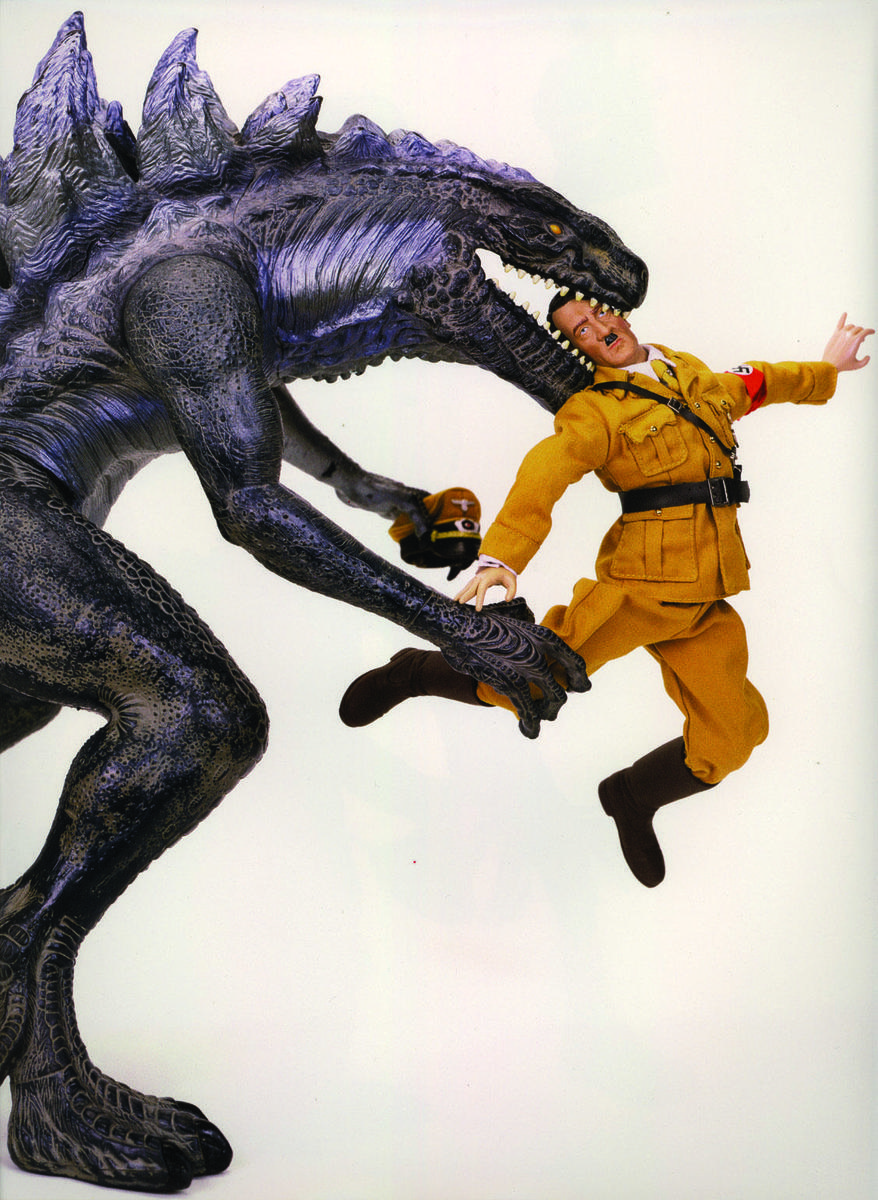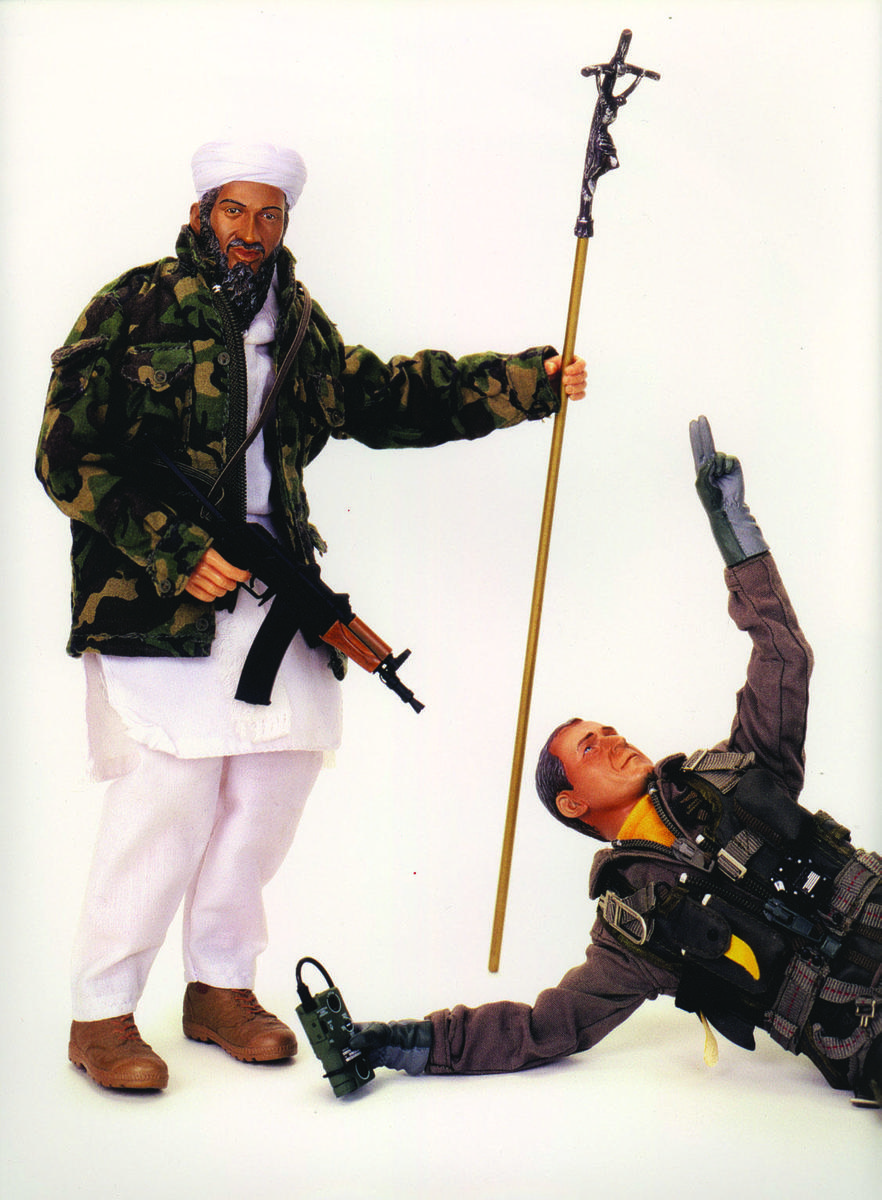
The first time I met Selim Varol, the man they call the Toy Giant, I was expecting him to suck. I hadn’t really had many toys as a kid, and at a very early age I’d adopted the punk/skate ethos of “property is theft.” At the front of my small vinyl record collection sat Poison Idea’s Record Collectors Are Pretentious Assholes EP, and when I encountered the wide-eyed, Cheshire-cat-grinning, combat-fatigue-wearing Turk at a group art show in Barcelona, before we spoke, I couldn’t help but think the same of vinyl toy collectors, too.
We were both exhibiting in the show, but the organizers didn’t know how to use their video camera, so I got roped into shooting interviews. Selim was my first victim, and as he launched into a heartfelt and surprisingly eloquent treatise on toys and wonderment and the importance of cultivating one’s inner child, I started to think I might be the pretentious one. Here was a crazy collector — his toy collection may be the world’s largest — who was adamantly opposed to keeping anything in a box. Since then he has published a book of tableaux featuring his vinyl figures, ToyGiants, with photographers Daniel and Geo Fuchs, and created a roving conceptual gallery, artempus, to showcase his collections and enthusiasms, which are legion.

Monihan Monihan: How many of these toys do you have, Selim?
Selim Varol: Fifteen thousand? Maybe? I don’t actually know anymore…
MM: How did you get started?
SV: When I was six years old, I was completely blown away by the first Star Wars movie. We were on our yearly holiday trip to Turkey — I was born in Izmir, but we moved to Germany when I was two — and my parents took me to an old-school open-air double feature. The second movie was Alien. I remember running away during the first creepy scene.
Alone, psyched by Star Wars and shocked by Alien, I pissed my pants on the dark walk back to my auntie’s house, where we always stayed. It must have had some effect because to this day I have lots of Star Wars and Alien toys.
MM: But not the original ones, right? I’ve heard you talk about another pivotal incident in your life as a collector.
SV: Yeah, I came home one day, entered my bedroom, and all my childhood heroes were gone. My parents aren’t sure anymore which of them did it, but in any case the message was clear. This was it — time to grow up. I think I was twelve years old, and I can remember that moment like it was yesterday.
MM: You did not grow up.
SV: I proceeded to buy back all of my favorite pieces, one by one, over a period of time. And then I kept going. By the time I realized what I was doing, I was well into my long completist period.
MM: What was that?
SV: For example, I didn’t just get my Star Wars figures back — I tried to get every Star Wars toy ever made. Which might entail running to every flea market in town, or driving to toy conventions, or flying to toy conventions. Or… seeking out old toy manufacturers’ production samples and molds.
Looking back, that completist period was the most boring time of my life. It was like I had a full-time job as an archivist. Today I only buy things that I like and that somehow round out my collection as a whole.
MM: Are your parents collectors of any sort?
SV: No, my parents never collected anything. I mean, my dad is a bit of a pack rat, he can’t throw anything away. So that’s sort of collecting. But as Gastarbeiters (guest workers) we weren’t the richest people around Duisburg Bruckhausen, the industrial area where we lived. Both of my parents were working hard.
MM: Not to psychoanalyze you or anything, but where did this obsession come from? Were you particularly alienated as the child of guest workers? Were your “childhood heroes” like friends or trustworthy companions you could rely on when real friends were few and far between? Like Linus and his security blanket?
SV: To be honest, I never had big problems being a foreigner in Germany. It was more a question of money, I think. There was a kid in the neighborhood named Oliver who had all the Star Wars toys. That was something my parents just could not afford. Part of my collecting habit is definitely rooted in the fact that once I started earning money, I had the opportunity to buy all the stuff my parents couldn’t buy for us when we were kids.
MM: Could this sustained infatuation with toys be characterized as an attempt to reclaim your lost youth?
SV: Not really — I think I’m still young! As Andy Warhol said, since people are going to be living longer and getting older, they’ll just have to learn how to be babies longer. I don’t see my faith in playing as some sort of bizarre contrived antidote to lost innocence. I just truly believe that playing keeps you creative, young, and sociable.
MM: So in addition to your toy collection, you have a sizable collection of contemporary art. And an itinerant art gallery in Düsseldorf in which to exhibit your stuff — toys, sculptures and photographs alike. How did that happen?
SV: The transition was pretty easy. My art collection started with “art toys” that clearly related to the kinds of toys I’d loved as a kid. And over time the “art toys” I was collecting became widely accepted by the contemporary art scene. With artists like Murakami, KAWS, and Michael Lau initially leading this development, it seemed to happen pretty naturally. But I think the urge to make art and the urge to make toys are the same. The new medium of easy-to-sculpt materials, like vinyl, just accelerated this phenomenon, in that it made it affordable for everyone to work on small sculptures on a larger scale. And I don’t think that it will ever go away — we humans will keep playing till we die!